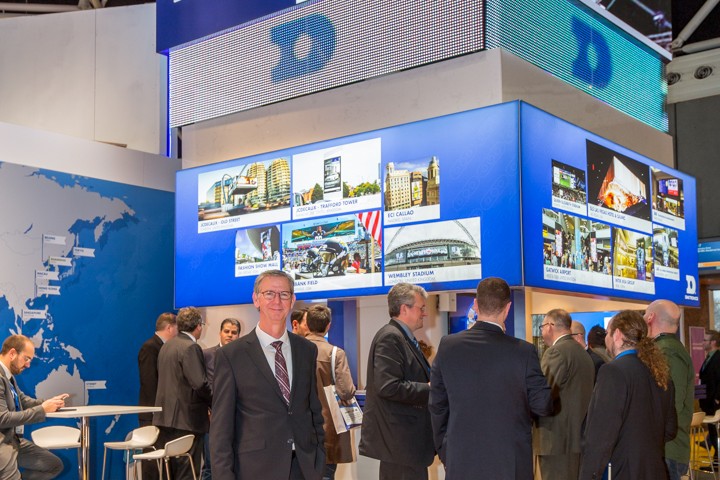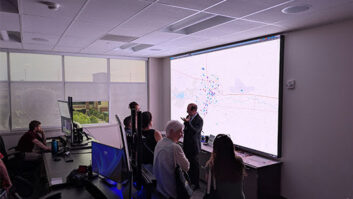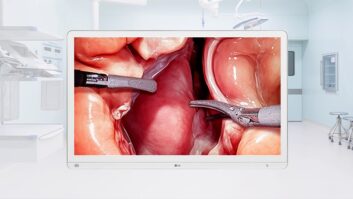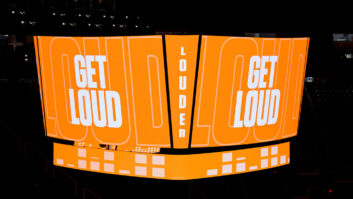
Daktronics solves the problem of performance-limiting heat emissions as your 4K display inventory increase with its new indoor UHD screens, which are designed for maximum image quality and minimal heat loss.
“Managing heat in an LED display is paramount since it is responsible for prematurely degrading LEDs and, for indoor product, heat generated by a display impacts HVAC requirements,” said Pete Egart, vp international, Daktronics. “One of things we’ve done is to feed less electricity into the components (generating less heat) but we still get twice the brightness.”
Available in a 1.9mm or a 2.7mm line spacing, the panels feature rapid processing technology which enables them to operate at half the power consumption of an industry standard solution and yet still feel cool to the touch even at full brightness.
“We’ve been in this business 47 years and learned a lot about how to control all the aspects of LED that can contribute to its failure,” he said. “A lot of other companies will still have to tackle these problems.”
The introduction of large 4K panels has prompted creatives to design content framed by lots of white, much like a magazine style. “Since white is a combination of all colours, full white will use maximum power and can cause burnout on inferior display technology,” he observed.
The company is also demonstrating its ProPixel freeform LEDs which have been used at venues such as Wembley Stadium as well as on smaller sites such as around elevator shafts. The technology can be used to show full motion displays while being unobtrusive to anyone looking out from behind the mountable mesh.
The top of Daktronics’ stand has been transformed into a presentation of forced perspective, an emerging approach to visitor attraction which positions LEDs to create a 3D animation. The catch is that the viewer has to be at a certain angle to view it.
“More and more airports are interested in this technology to help give their space identity,” said Egart. “It could also change the face of public buildings.”
Stand: 8-N263







